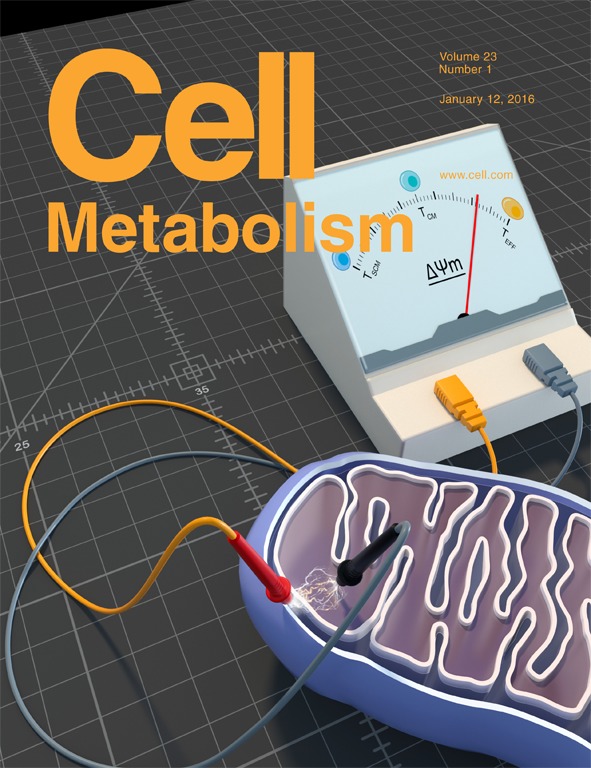- EN - English
- CN - 中文
Fat Turnover Assay in Drosophila
果蝇的脂肪转化测定
发布: 2016年11月05日第6卷第21期 DOI: 10.21769/BioProtoc.1996 浏览次数: 12258
评审: Masahiro MoritaLeonardo G. GuilgurAnonymous reviewer(s)
Abstract
Like all animals, Drosophila shows robust fat (triglyceride) turnover, i.e., they synthesize, store and utilize triglyceride for their daily metabolic needs. The protocol describes a simple assay to measure this turnover of triglycerides in Drosophila.
Background
Almost all animals store energy reserves in the form of glycogen and triglycerides. Many physiological, pathological and environmental conditions cause changes in the total level of these energy reserves, especially triglycerides. However, it’s not always clear whether the resulting changes in triglycerides are due to reduced breakdown, increased synthesis or vice versa. With this protocol, it is possible to determine both the rate of synthesis and degradation of the newly synthesized triglycerides in flies.
Materials and Reagents
- 1.5 ml Eppendorf tubes
- Hamilton glass syringes (Hamilton, catalog number: Gastight 1700 )
- Metallic needle
- Razor blades (VWR, catalog number: 55411 )
- TLC silica gel 60 plates (Figure S1) (EMD Millipore, catalog number: 105626 )
- Drosophila vial (Genesee Scientific, Flystuff, catalog number: 32-109 )
- Whatman® chromatography paper (Sigma-Aldrich, catalog number: WHA3030861 )
- Drosophila melanogaster
- D-[14C(U)]-glucose (PerkinElmer, catalog number: NEC042V250UC )
- Yeast extract
- Sugar
- Liquid nitrogen and nitrogen gas
- Chloroform (Sigma-Aldrich, catalog number: 366927 )
- Methanol (EMD Millipore, catalog number: MX0475-1 )
- Cupric sulfate acid (EMD Millipore, catalog number: 102790 )
- O-phosphoric acid (85%) (Thermo Fisher Scientific, Fisher Scientific, catalog number: A242-212 )
- Lipid standards:
- Triolein (Sigma-Aldrich, catalog number: T7140 )
- Phosphatidylcholine (Sigma-Aldrich, catalog number: P3556 )
- Phosphatidylinositol (Sigma-Aldrich, catalog number: P6636 )
- Cholesterol (Sigma-Aldrich, catalog number: C8667 )
- Lauric acid (Sigma-Aldrich, catalog number: L556 )
- Myristic acid (Sigma-Aldrich, catalog number: M3128 )
- Palmitic acid (Sigma-Aldrich, catalog number: P0500 )
- Hexane (Sigma-Aldrich, catalog number: 32293 )
- Diethyl ether (Sigma-Aldrich, catalog number: 309966 )
- Acetic acid (AMRESCO, catalog number: 0714 )
- Sodium chloride (NaCl) (Sigma-Aldrich, catalog number: S9888 )
- Scintillation fluid (PerkinElmer, catalog number: Ultima GoldTM/6013329 )
- Drosophila food recipes (see Recipes)
- Solvent mixture (see Recipes)
- Cupric sulfate/phosphoric acid solution (see Recipes)
- 0.9% NaCl solution (see Recipes)
Equipment
- TLC chamber (Clarkson Laboratory and Supply, model: Latch-Lid ChromatoTank 80-30 )
- Kontes microcentrifuge motor and pestles (Sigma-Aldrich, catalog number: Z359971-1EA )
- Centrifuge (Eppendorf, model: Centrifuge 5810R )
- Benchtop vacuum oven (VWR, model: 97027 )
- Scintillation counter (Beckman Coulter, model: LS6500 )
- Scintillation vials (PerkinElmer, catalog number: 6000292 )
- Nalgene PPCO wash bottles (Thermo Fisher Scientific, Thermo ScientificTM, catalog number: 2405-0500 )
Procedure
文章信息
版权信息
© 2016 The Authors; exclusive licensee Bio-protocol LLC.
如何引用
Katewa, S. D. and Kapahi, P. (2016). Fat Turnover Assay in Drosophila. Bio-protocol 6(21): e1996. DOI: 10.21769/BioProtoc.1996.
分类
癌症生物学 > 细胞能量学 > 生物化学试验 > 其它化合物
生物化学 > 脂质 > 脂质测定
您对这篇实验方法有问题吗?
在此处发布您的问题,我们将邀请本文作者来回答。同时,我们会将您的问题发布到Bio-protocol Exchange,以便寻求社区成员的帮助。
提问指南
+ 问题描述
写下详细的问题描述,包括所有有助于他人回答您问题的信息(例如实验过程、条件和相关图像等)。
Share
Bluesky
X
Copy link













